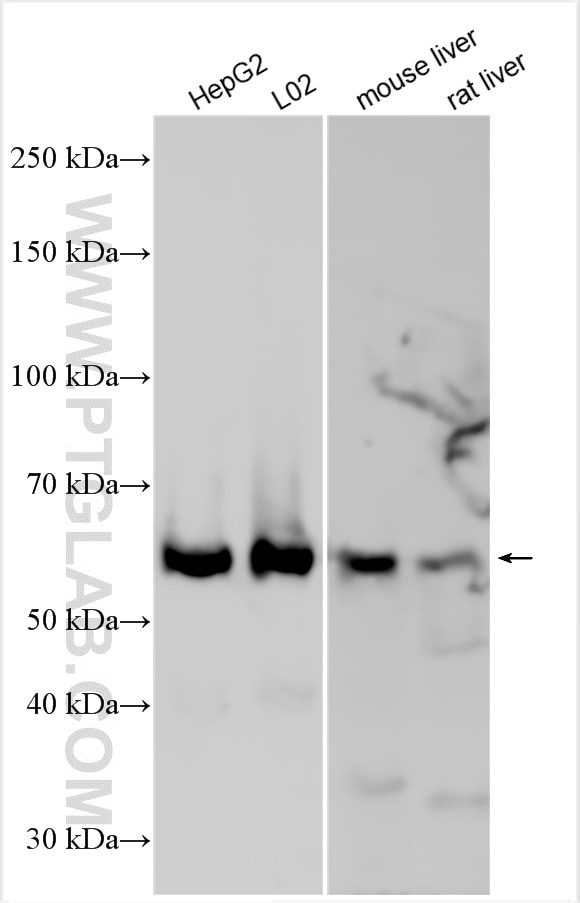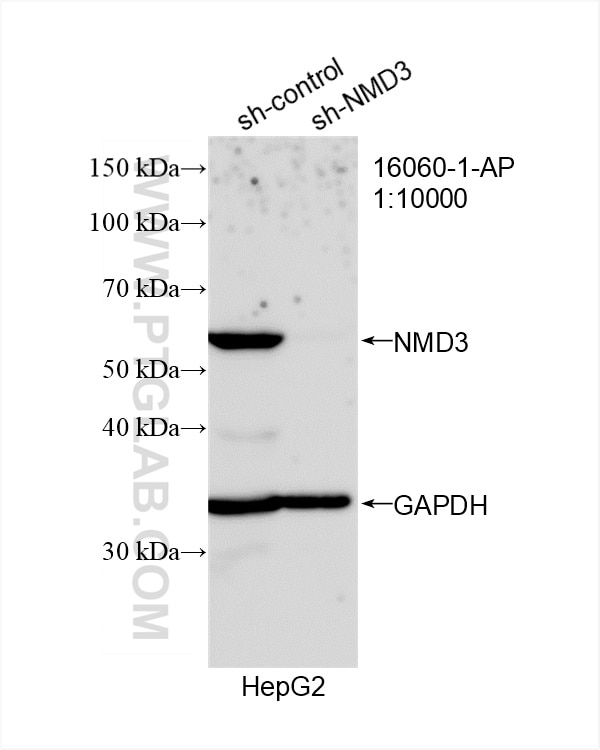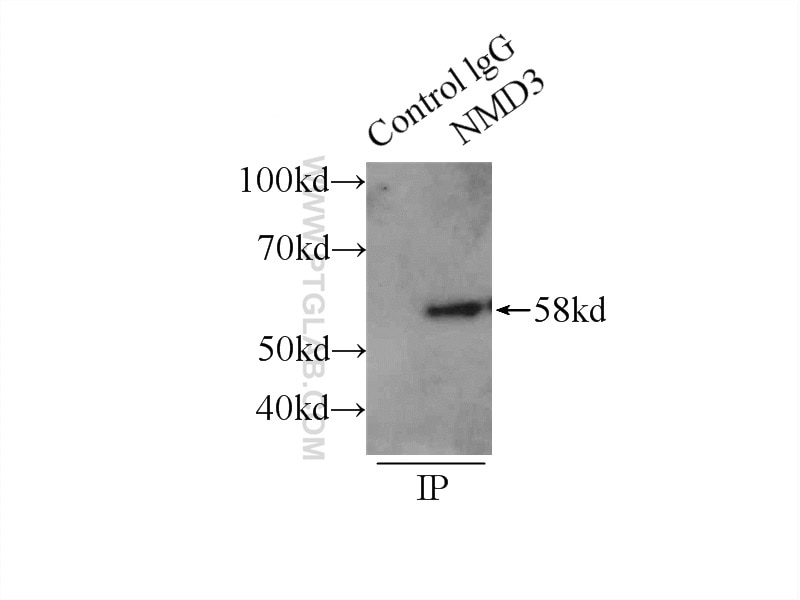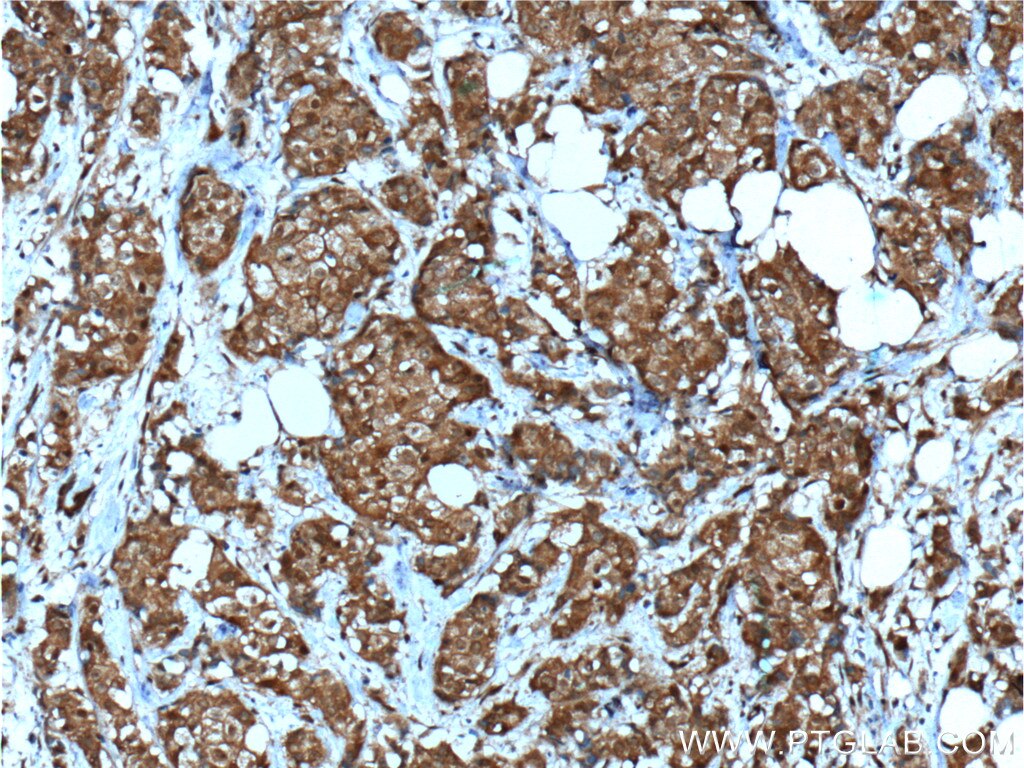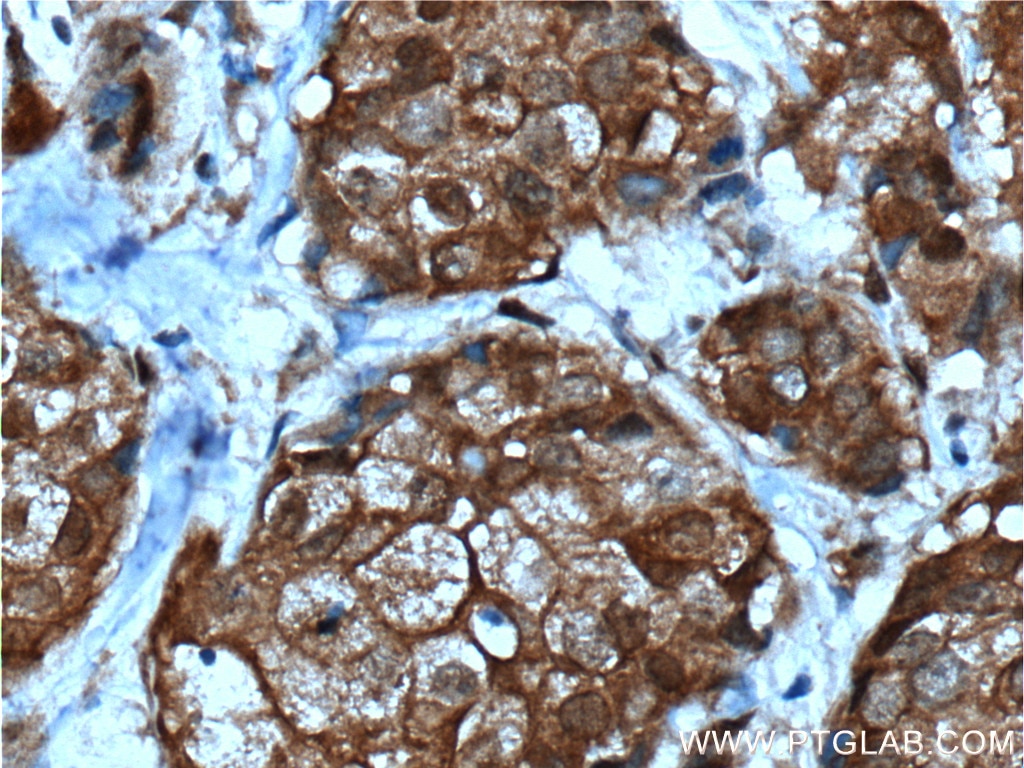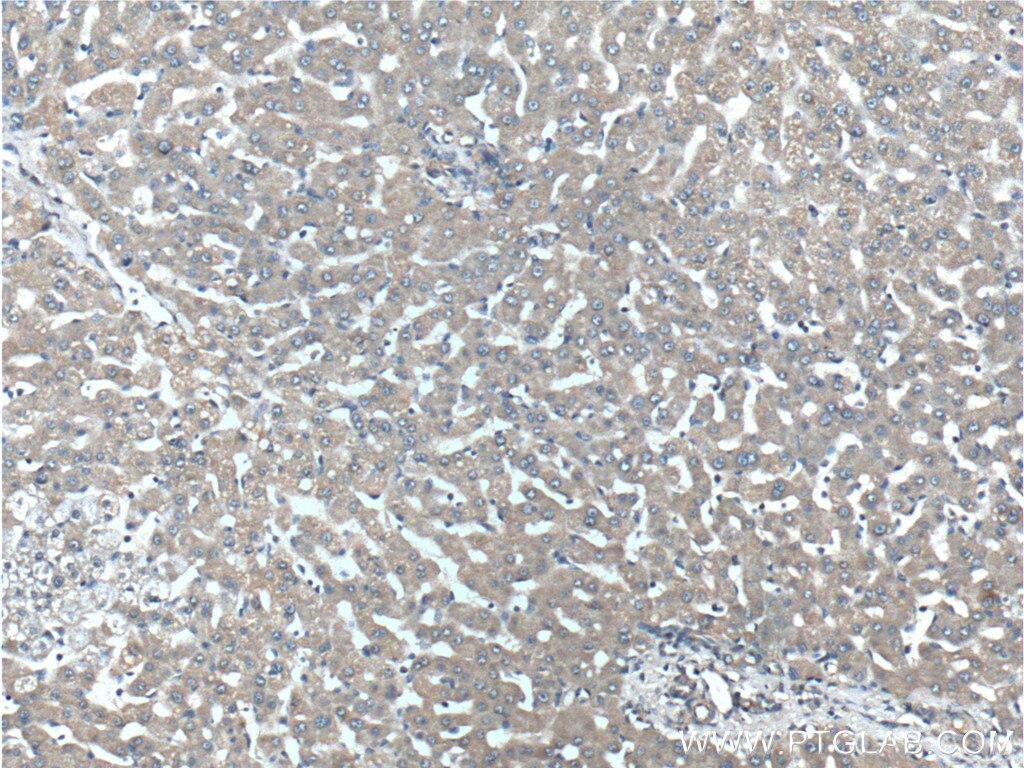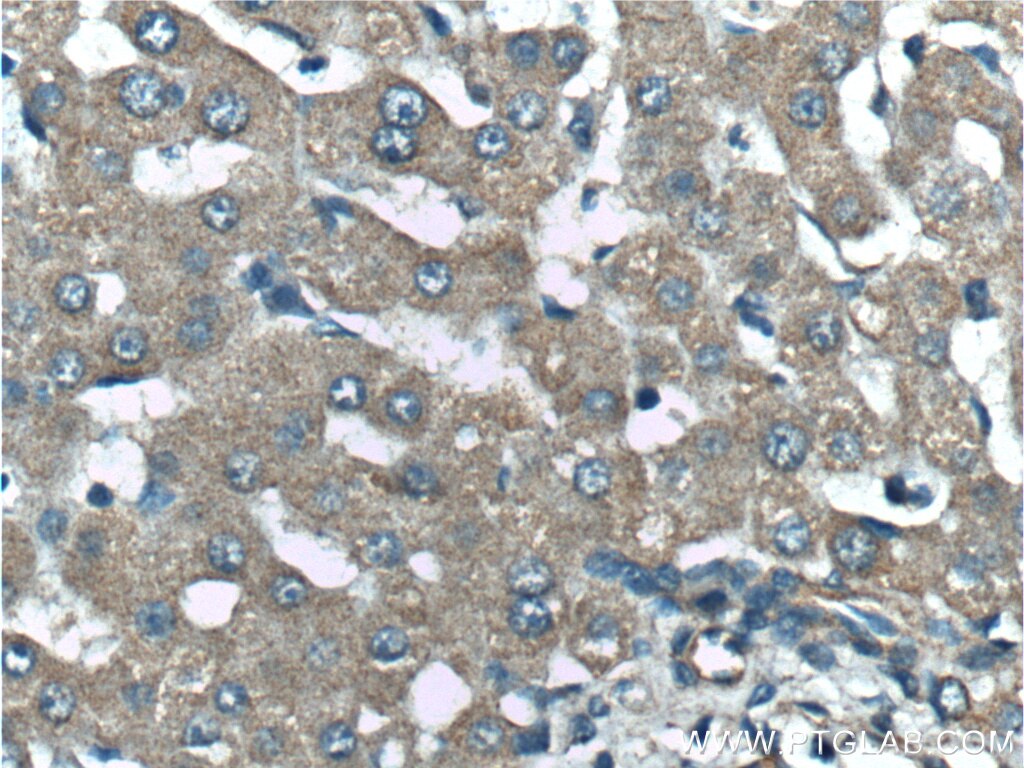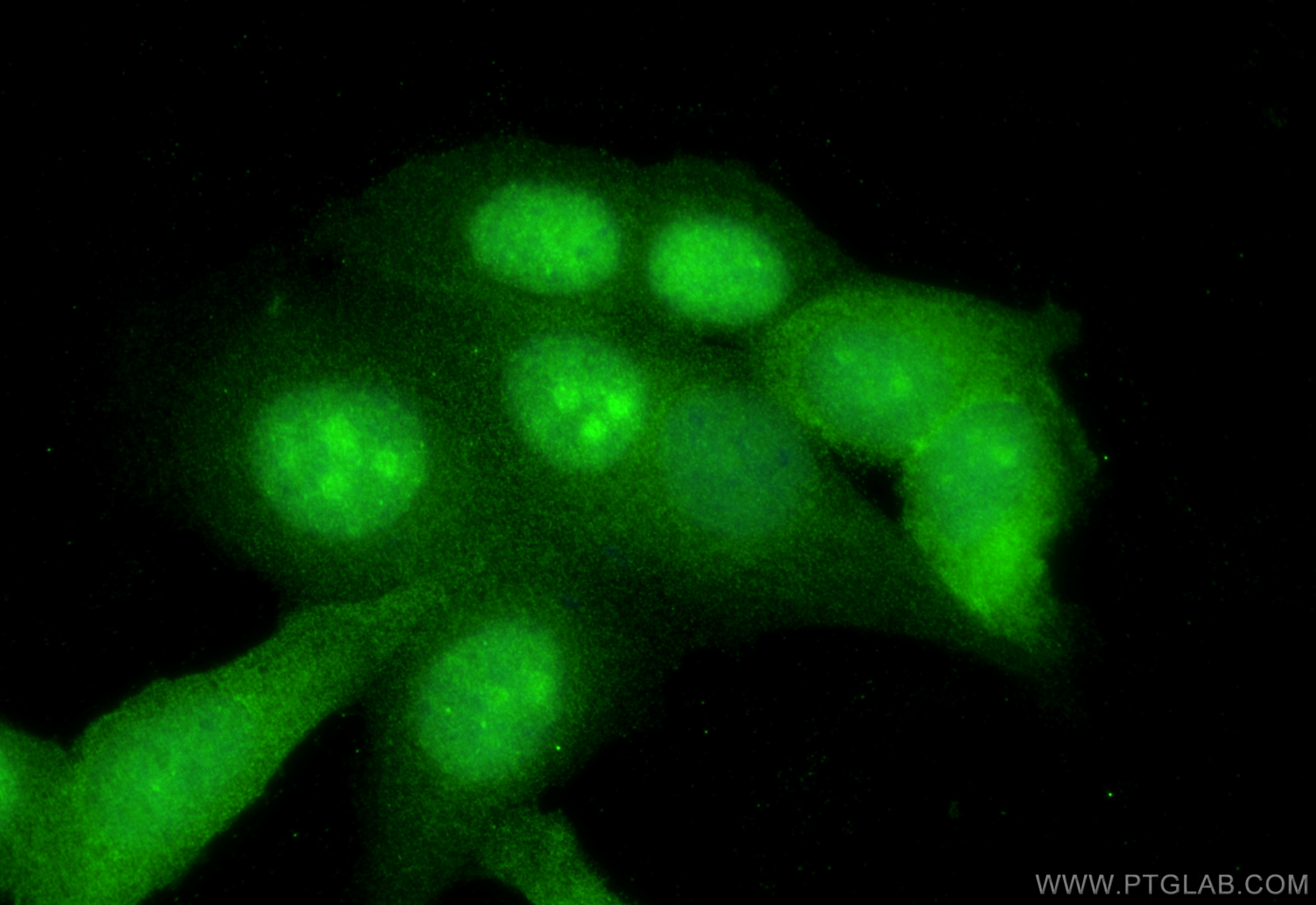- Featured Product
- KD/KO Validated
NMD3 Polyklonaler Antikörper
NMD3 Polyklonal Antikörper für WB, IHC, IF/ICC, IP, ELISA
Wirt / Isotyp
Kaninchen / IgG
Getestete Reaktivität
human, Maus, Ratte
Anwendung
WB, IHC, IF/ICC, IP, ELISA
Konjugation
Unkonjugiert
Kat-Nr. : 16060-1-AP
Synonyme
Geprüfte Anwendungen
| Erfolgreiche Detektion in WB | HepG2-Zellen, L02-Zellen, Mauslebergewebe, Rattenlebergewebe |
| Erfolgreiche IP | HepG2-Zellen |
| Erfolgreiche Detektion in IHC | humanes Mammakarzinomgewebe, humanes Lebergewebe Hinweis: Antigendemaskierung mit TE-Puffer pH 9,0 empfohlen. (*) Wahlweise kann die Antigendemaskierung auch mit Citratpuffer pH 6,0 erfolgen. |
| Erfolgreiche Detektion in IF/ICC | HepG2-Zellen |
Empfohlene Verdünnung
| Anwendung | Verdünnung |
|---|---|
| Western Blot (WB) | WB : 1:5000-1:50000 |
| Immunpräzipitation (IP) | IP : 0.5-4.0 ug for 1.0-3.0 mg of total protein lysate |
| Immunhistochemie (IHC) | IHC : 1:50-1:500 |
| Immunfluoreszenz (IF)/ICC | IF/ICC : 1:50-1:500 |
| It is recommended that this reagent should be titrated in each testing system to obtain optimal results. | |
| Sample-dependent, check data in validation data gallery | |
Veröffentlichte Anwendungen
| KD/KO | See 1 publications below |
| WB | See 8 publications below |
| IF | See 3 publications below |
Produktinformation
16060-1-AP bindet in WB, IHC, IF/ICC, IP, ELISA NMD3 und zeigt Reaktivität mit human, Maus, Ratten
| Getestete Reaktivität | human, Maus, Ratte |
| In Publikationen genannte Reaktivität | human, Maus |
| Wirt / Isotyp | Kaninchen / IgG |
| Klonalität | Polyklonal |
| Typ | Antikörper |
| Immunogen | NMD3 fusion protein Ag8894 |
| Vollständiger Name | NMD3 homolog (S. cerevisiae) |
| Berechnetes Molekulargewicht | 503 aa, 58 kDa |
| Beobachtetes Molekulargewicht | 58 kDa |
| GenBank-Zugangsnummer | BC013317 |
| Gene symbol | NMD3 |
| Gene ID (NCBI) | 51068 |
| Konjugation | Unkonjugiert |
| Form | Liquid |
| Reinigungsmethode | Antigen-Affinitätsreinigung |
| Lagerungspuffer | PBS with 0.02% sodium azide and 50% glycerol |
| Lagerungsbedingungen | Bei -20°C lagern. Nach dem Versand ein Jahr lang stabil Aliquotieren ist bei -20oC Lagerung nicht notwendig. 20ul Größen enthalten 0,1% BSA. |
Hintergrundinformationen
Human NMD3 gene encodes 60S ribosomal export protein which was found in a 60S ribosomal subunit export complex with RAN and XPO1. This nucleocytoplasmic shuttling protein NMD3 is an adaptor for export of the 60S ribosomal subunit from the nucleus. NMD3 contains a CRM-1-dependent leucine-rich nuclear export signal (NES) and a dispersed nuclear localization signal (NLS), the basic region of which is also required for nucleolar accumulation. NMD3 are required for nuclear export of the 60S ribosomal subunit in yeast and vertebrate cells, recent finding has also revealed its role in Arabidopsis thaliana.
Protokolle
| PRODUKTSPEZIFISCHE PROTOKOLLE | |
|---|---|
| WB protocol for NMD3 antibody 16060-1-AP | Protokoll herunterladen |
| IHC protocol for NMD3 antibody 16060-1-AP | Protokoll herunterladenl |
| IF protocol for NMD3 antibody 16060-1-AP | Protokoll herunterladen |
| IP protocol for NMD3 antibody 16060-1-AP | Protokoll herunterladen |
| STANDARD-PROTOKOLLE | |
|---|---|
| Klicken Sie hier, um unsere Standardprotokolle anzuzeigen |
Publikationen
| Species | Application | Title |
|---|---|---|
Cell Stem Cell HectD1 controls hematopoietic stem cell regeneration by coordinating ribosome assembly and protein synthesis. | ||
Genes Dev Uncoupling of GTP hydrolysis from eIF6 release on the ribosome causes Shwachman-Diamond syndrome. | ||
Biomolecules Mutations of Key Functional Residues in CRM1/XPO1 Differently Alter Its Intranuclear Localization and the Nuclear Export of Endogenous Cargos | ||
EMBO Mol Med Portimine A toxin causes skin inflammation through ZAKα-dependent NLRP1 inflammasome activation | ||
Science A subcellular map of translational machinery composition and regulation at the single-molecule level |
